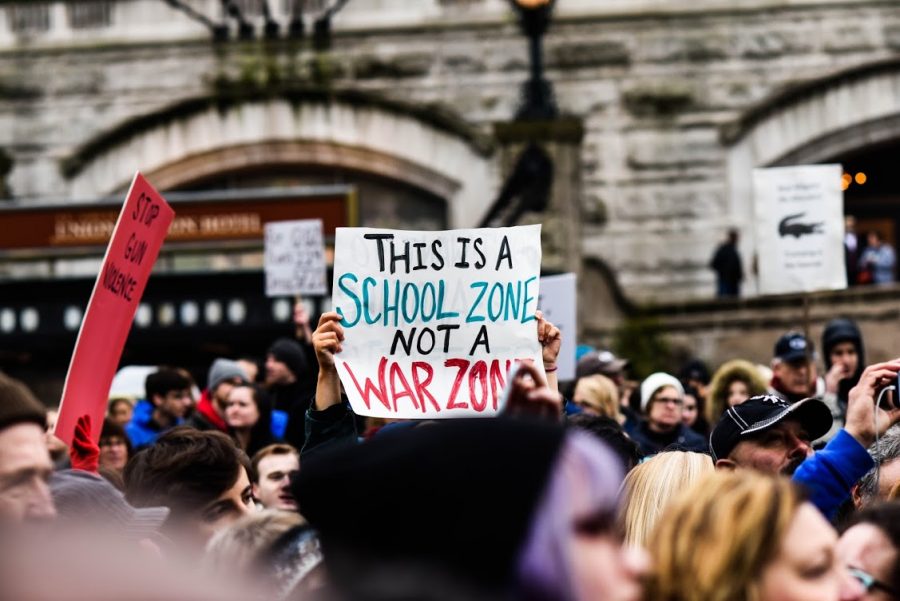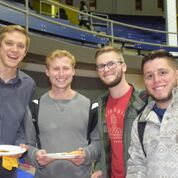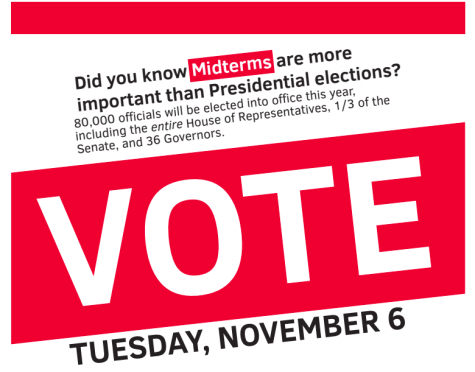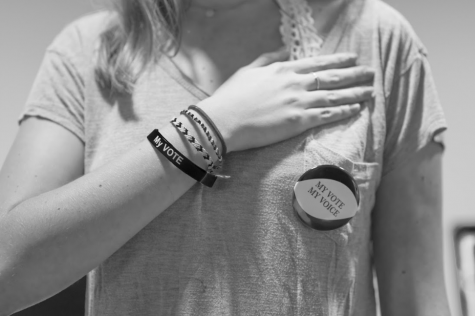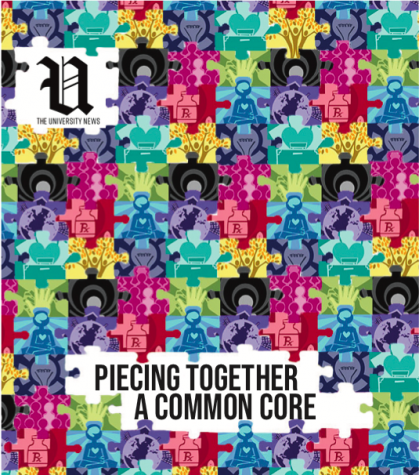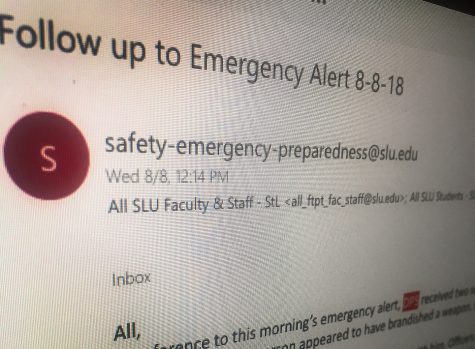Marching for Our Lives
Saint Louisans march for their lives Saturday morning in response to gun violence as people all over the country march in their own communities.
Andrea, age 7, walked alongside her mom, Martha in Saturday’s “March for Our Lives” in downtown St. Louis. Martha’s sign read “trained to be a teacher not a sharp shooter.” There were at least 12,000 other protestors marching in solidarity against gun violence. The march is a part of the national “March for our Lives” movement taking place in Washington D.C. and in multiple other U.S. cities.
The rally started at 10 a.m. with three different speakers. While the catalyst behind the march was the Parkland, Florida mass shooting, the speakers all echoed similar sentiments in that protestors everywhere need to decry the loss of black lives to gun violence just as much as white lives. “This is not a white-people-only march, this is a people’s march,” a speaker boldly stated.
The march started down Market Street, advancing toward the Arch to the beats of drums and tubas somewhere in the crowd, as well as chants of “Hey hey, ho ho, the NRA has got to go.” The protesters marched in a rectangle throughout downtown St. Louis before meeting back up in front of Union Station for another round of speeches.
In the crowd, SLU junior Eric Elizondo reflected that the march was about remembrance. “I’ve grown accustomed to these events happening over and over again. I’m trying to not let another one happen without remembering.”
Bayless High School sophomore Morgan Moe stated plainly when asked what she was hoping to accomplish, “I just want people to stop dying, man.” She echoed similar sentiments to those of the speakers. “I also want the people here to realize that Parkland happens every day north of Delmar. Gun control doesn’t stop at ending mass shootings.”
Rosati-Kain High School junior Hannah Wyler asked during conversation, “Education is a basic human right; if we get shot up in school do we even still have that right?” The speakers at the end of the rally focused mostly on the survivors of gun violence and what happens to them after the media goes away — given the media ever came in the first place.
One speaker recounted the story of her father surviving a gunshot wound, and being broken from the news that he would be a paraplegic because of it. She recalled watching her sister’s face drop when she learned that her friend’s life was lost to gun violence. “These phone calls have become the norm, but we shouldn’t have to deal with this.”
Glenda Lay, a guest speaker, gave a powerful testimony from the perspective of someone who had lost their sister to gun violence. “I’m going to tell you about what happens after the detective calls saying that your family member wasn’t coming home anymore.” Lay said she was “thrilled that this many people showed up,” and implored people to register to vote and to “keep going” after they registered.
The student organizers of the march spoke next, rallying the crowd back up. All of the organizers were high school students, and they asked the attendants to attend another walk out on April 20. “We must demand that our politicians act on gun legislation. Please annoy these people. Make sure their inboxes are full.” After the student organizers rallied the attendants behind cries of “not one more,” Rep. Bruce Franks Jr. took the stage. Franks, a black representative from St. Louis, echoed similar sentiments of the speakers before him, and asked that the “people here today realize this happens every day in the black communities.”
Your donation will support the student journalists of Saint Louis University. Your contribution will help us cover our annual website hosting costs.


